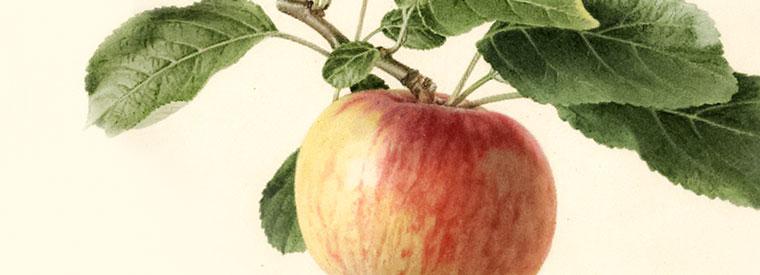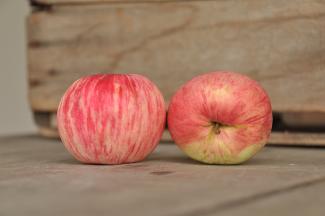"Humanity will be renewed in the Orchard, and the Orchard will restore it."

Fruit
GRAVENSTEIN is believed to have come from Denmark, via Germany, and is likely to be an Italian variety, given to the Duke of Gravenstein in the 17th century, arriving in Denmark in 1669, and introduced into the United States from Germany in 1790. It was planted at a Russian settlement in Sonoma County, California, in 1820. There are a number of strains and cultivars. The fruit is roundish, tending to be a bit lopsided with yellow skin marked with bright red and copper or orange. Soon after ripening, the skin develops a waxy or greasy feel. The yellowish-white flesh is tender, fine-grained and crisp, and the acid-sugar content is well-balanced. The seed is ovate, pyriform, and reddish-brown in color, and the fruit has a thin skin, large core, and a short stem. A triploid that must have a pollinator for fruit set, it is a spur and tip bearer. The leathery leaves are shiny and satiny with shallow serration, and the bark is smooth and reddish in color. Flowers of Gravenstein are large. The vitamin C content is 7.80 mg/100 gm. Because of its uneven ripening and tendency to drop, picking should be frequent. Heavy pruning and thinning will control its tendency to biennial bearing. It is subject to cedar apple rust and spray injury. Especially suitable for pie and sauce making and dessert when a high-flavored apple is wanted. It ripens irregularly, and humidity can set up August ripening time 10 days or even 2 weeks. Storage life is very short.
Ripening Period
- Late Summer - August
Other Features
- Pollen Sterile


